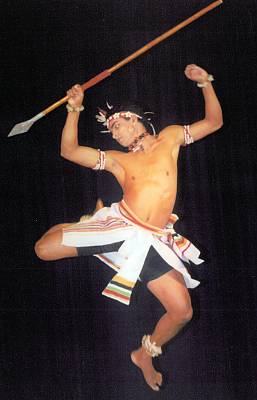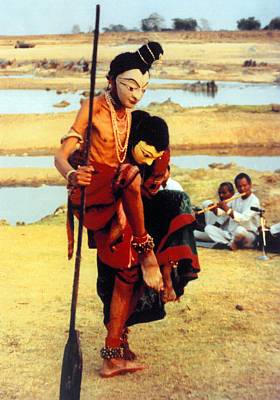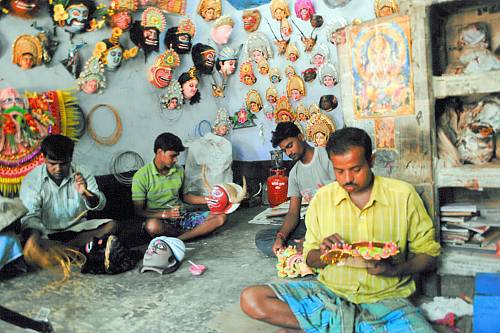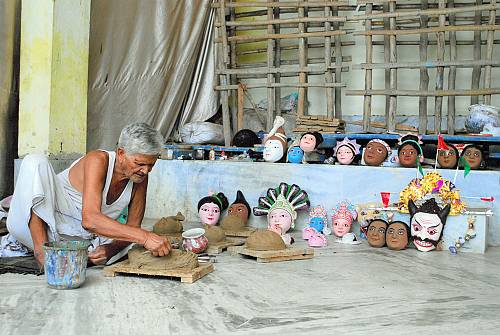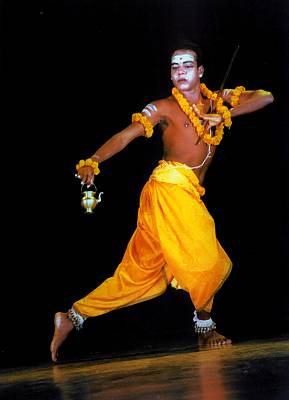Chhau dance
Inscribed in 2010 (5.COM) on the Representative List of the Intangible Cultural Heritage of Humanity

Chhau dance is a tradition from eastern India that enacts episodes from epics including the Mahabharata and Ramayana, local folklore and abstract themes. Its three distinct styles hail from the regions of Seraikella, Purulia and Mayurbhanj, the first two using masks. Chhau dance is intimately connected to regional festivals, notably the spring festival Chaitra Parva. Its origin is traceable to indigenous forms of dance and martial practices. Its vocabulary of movement includes mock combat techniques, stylized gaits of birds and animals and movements modelled on the chores of village housewives. Chhau is taught to male dancers from families of traditional artists or from local communities. The dance is performed at night in an open space to traditional and folk melodies, played on the reed pipes mohuri and shehnai. The reverberating drumbeats of a variety of drums dominate the accompanying music ensemble. Chhau is an integral part of the culture of these communities. It binds together people from different social strata and ethnic background with diverse social practices, beliefs, professions and languages. However, increasing industrialization, economic pressures and new media are leading to a decrease in collective participation with communities becoming disconnected from their roots.

